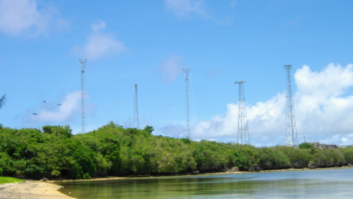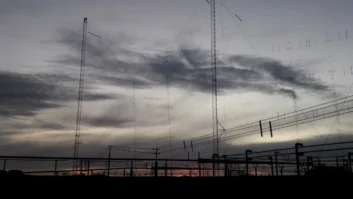Here’s a sampling of recent reader letters to the editor of Radio World. Comment on this or any article. Email radioworld@futurenet.com.
They Helped WUVT in Its Time of Need
Although I’m very happy to hear about WUVT’s recent install of a new Nautel transmitter, I feel that much was left out of Steve Floyd’s piece “Virginia Tech’s WUVT Celebrates 75 Years,” in the Feb. 14 issue. It was not just “several broadcast manufacturers” who helped the station after the tragedy in 2007.
I remember that sad day of April 16 like it was yesterday. I was eating lunch in my truck alongside I-81 in Roanoke, Va. and began to see many state troopers racing south towards Virginia Tech and knew something was bad. Turning on the news channel confirmed the worst: Many lives had been lost.
I had to sit there for the next 30 minutes trying to control my emotions and continue my workday.
I was in the 12th of almost 30 years with Clear Channel and iHeartMedia as chief engineer of all of our stations in the Roanoke-Lynchburg area. I was contacted by Steve Davis, the company’s senior vice president of real estate, facilities and capital management, to see what we could do to help.
Steve and I, along with Gary Kline of Cumulus Media, met with administrators on the Virginia Tech campus to discuss a game plan to replace the station’s failing BE FM 3.5 and make the move to Price Mountain. Gary kindly donated the tower space.
I had just pulled a Harris Z5 out of service from 104.9 Roanoke. We donated that to WUVT and found them a prefab concrete building from the state department of transportation. Jeff Shepard of Lynchburg Crane Service moved the building from Bedford, Va., and placed it atop Price Mountain — no easy task for a 35,000-pound load. He donated that work. I found a used generator from Willie Bennett at a Clear Channel station in Charleston, S.C.
Also of note were RF studies done by Ben Dawson of Hatfield & Dawson to get the station its ERP increase and Orban’s donation of a new audio processor. Longtime iHeart/Clear Channel engineer Paul Jellison found an ERI Rototiller antenna that had been pulled from service, and the company donated that. Carl Davis and others at ERI then rebuilt and retuned that antenna to 90.7. There were probably others behind the scenes who also helped.
I was very proud to be a part of that project, which proves how important it is for everyone to work together towards a common goal in times of need.
— Jeff Parker, RF Contract Engineer
[Read more about the above project in a Radio World story published in 2009. Find it here.]
Celebrate the MacGyvers
As usual, Mark Persons expresses his love for our craft by sharing useful information.
His recent article “What to Know About Three-Terminal Voltage Regulators” highlighted an inexpensive “cure” for unwanted regulator oscillations. It reminded me of three experiences from my earlier days:
We had a nice audio console in our production control that started to show odd distortion on peaks. I checked its main program module with a ‘scope, and saw that one three-terminal regulator would break into oscillation when I raised the audio level near full-scale. Replacing a simple electrolytic fixed that.
The second example was in another device that its manufacturer had returned to me as “unrepairable.” I unexpectedly was able to fix it by replacing a little disc capacitor in the regulator circuit.
A third involved one of the modules in our STL transmitter. The “normal” method was to buy a complete replacement module, which would be costly. I investigated and found that it contained a small switching power supply, which we were able to buy from a third-party source, saving at least some money.
But still curious, I took the baddie module apart and found ONE easily replaceable electrolytic cap. After that, I was able to repair future “baddie” modules very cheaply and quickly (except for one whose switcher failed for other reasons… good thing we’d bought TWO of them).
While we’ve transitioned to newer, more-compact and -efficient technologies, the ability to fix “stuff” on our own and save money in the process is sadly slipping away. Let us celebrate our “MacGyvers” who can keep things going … and folks like Mark who generously share their knowledge.
— Michael Shovan, WB2KHE, CBTE, fd&t technical services
Why Not Both?
I couldn’t help but write a response to Kim Andrew Elliott’s commentary “Why We Need Shortwave 2.0” and Ruxandra Obreja’s followup letter.
I’m a longtime user of DRM broadcasting and of Shortwave Radiogram.
My question is “Why can’t we have both?” DRM has proven itself as a format for multimedia broadcasting since its inception, some 20 years ago. Shortwave Radiogram has also proven itself, being carried on shortwave since Dr. Elliott’s flagship broadcast on VOA, during the final years of his career there.
What we need now: Additional shortwave broadcasts in both formats would prove to be an excellent test for these “2.0” technologies. The Woofferton site can be used to broadcast both DRM and Shortwave Radiogram to North America. The VOA Greenville site can be used to broadcast both modes to Europe. Testing could be done with little or no modifications to transmitters in both instances.
— Christopher D. Rumbaugh
Any Digital Conversion Should Be Mandated
I love how large group stations with a lot of money suggest that all AM station should move to MA3 digital mode.
I would like to convert our AM to digital but we don’t have the money to chase standards that the FCC changes every year or two, and we certainly can’t justify the cost when receivers aren’t universally available.
If the commission wants stations to change over, Congress, in its continuing attempt to keep AM in cars, should also require the standard for AM. This chicken-and-egg, market-driven way of letting things change on their own doesn’t work.
It needs to be required by the FCC or Congress, or both. We small-market stations don’t have the capital to experiment with digital AM.
— Jim Talbott, Katahdin Communications, Millinocket, Maine
[Check Out More Letters at Radio World’s Reader’s Forum Section]



